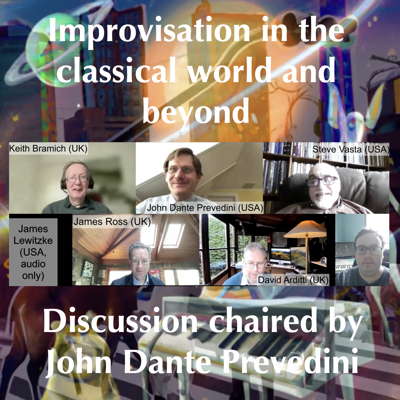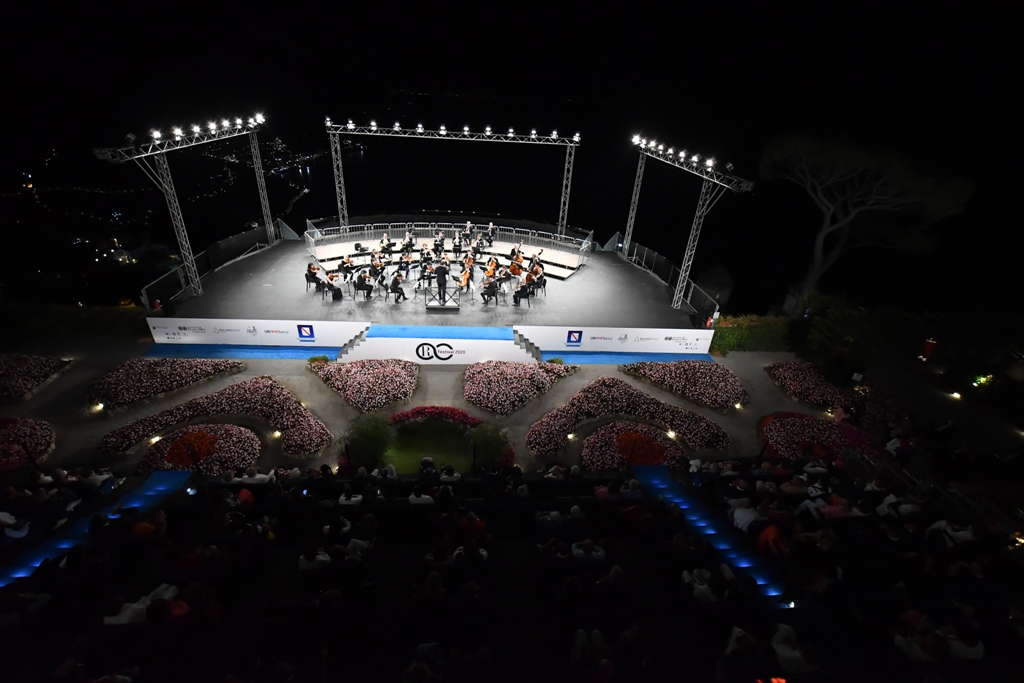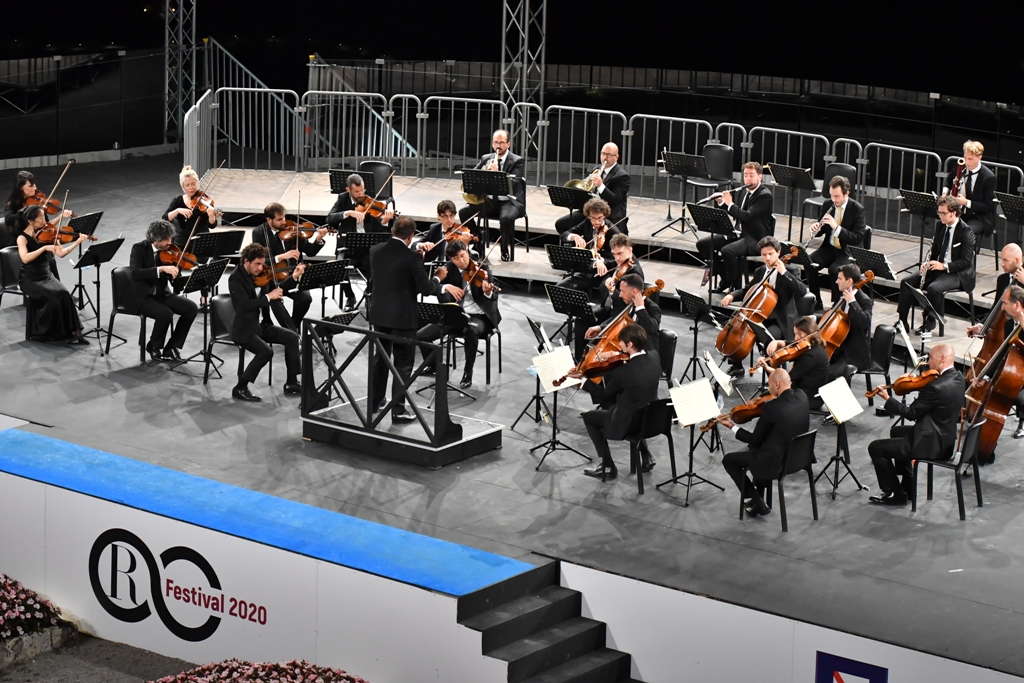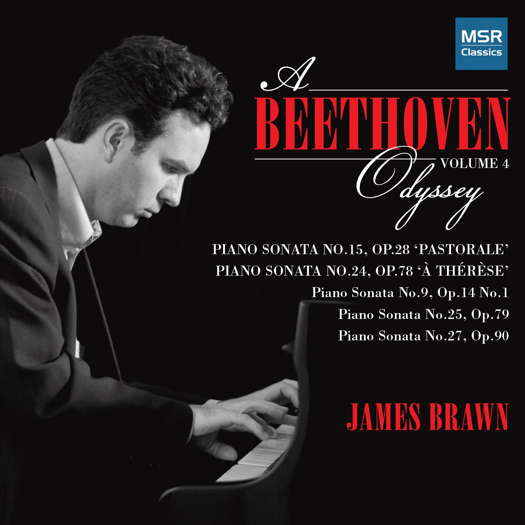 DISCUSSION: John Dante Prevedini leads a discussion about Improvisation in the classical world and beyond, including contributions from David Arditti, James Lewitzke, James Ross and Steve Vasta.
DISCUSSION: John Dante Prevedini leads a discussion about Improvisation in the classical world and beyond, including contributions from David Arditti, James Lewitzke, James Ross and Steve Vasta.
Soft Romanticism
GIUSEPPE PENNISI listens to Schubert, Wagner and Mozart from Daniele Gatti and the Mozart Orchestra at the Ravello Festival
Ravello is not only a hilltop of lanes and stairs but also a small city of marvellous lush and manicured gardens surrounding elegant villas. Most of them date from the late nineteenth and early twentieth centuries. They were mainly planned and landscaped under the vigilant eyes of wealthy British intellectuals such as Ernest William Beckett, Harold Peto, Edwin Lutyens and Gertrude Jekyll. In one of these gardens – that of Villa Rufolo, there is a natural auditorium. There is no need for an acoustic shell for musical performances because the wind from the sea and the natural wall of the hill determine an acoustic that makes one appreciate the lightness of the sound. At the same time, there is a stunning view of the Amalfi coastline, the Salerno gulf and the sandy beaches of Calabria too.

The Mozart Orchestra performing in the Villa Rufolo gardens at the Ravello Festival on 5 September 2020. Photo © 2020 Pino Izzo
On 5 September 2020, I listened to a concert given by the Mozart Orchestra conducted by Daniele Gatti. The program was mostly Romantic with emphasis on early, soft Romanticism.
It was Daniele Gatti's first time on the Mozart Orchestra's podium. Created in 2004 by the Bologna Philharmonic Academy, the Mozart Orchestra has been shaped around the musical thought of Claudio Abbado, its artistic director for ten years. The orchestra has built its identity alongside great soloists and key players from prestigious orchestras with young talents from all over the world. It has the number of players of a large chamber orchestra - a form which is sometimes also called a 'Mozart orchestra'. This means that it has fewer musicians than a complete symphony orchestra - especially in the strings, because the number of woodwind, horn and other players is less flexible. It produces a lighter sound, such as the sound of chamber music. However, depending on the concert's program, the number of actual members often exceeds this format.
This discussion about the orchestra's size may seem pedantic. It is, however, useful to understand a program centered on the great Romantic and Mozart repertoire as well as the careful selection of pieces that do not require large symphonic forces. An important aspect of Schubert's Symphony No 5, which started the evening, is the sensitive detachment from the Beethovenian ways and forms. It is almost a return and a rapprochement to the Mozart style, so evident from its score for small orchestra without trumpets or military drums; this is the same orchestral combination for which the original version of Mozart's Symphony in G minor was intended. This links the first and third parts of the program – contained in seventy minutes without interval due to the rules for live music in this phase of the coronavirus pandemic. This allows the Mozart Orchestra (and Gatti, who has great experience of Romantic music) to highlight the strengths of a relatively small number of orchestra members. This was felt especially in the third movement of Schubert's symphony, a serene minuet of Mozartian taste with a trio of popular Tyrolean accents, elaborated with great orchestral finesse. Also of note is the richness of modulations and tonal effects in the cheerful lively mood of the last movement: it has the cut of this spiky and youthful rondo.
Before going to Mozart's G minor symphony, there was a Wagnerian dip, almost obligatory in Ravello, where even from the insignia of the bars you can breathe the legend that the sets and the very music of the second act of Parsifal were inspired by Wagner's short visit to Villa Rufolo on his last trip to Italy. The creation of Siegfried Idyll has nothing to do with the Nibelung saga. It is deeply linked to Wagner's biography. On the morning of 25 December 1870, Christmas Day but also his wife Cosima's birthday, Wagner prepared a surprise for her: a performance of this symphonic poem, entrusted to fifteen musicians hidden at the bottom of the staircase of the villa of Triebschen near Lucerne where the Wagners then lived. Richard had composed for the occasion during the previous weeks. Cosima, in her diary, recalled that event with a few words, but they expressed all her emotion: 'It was music, and what music!' That unexpected gift showed in musical signs the happiness of those months, after the marriage and birth (in June 1869) of the third child, Siegfried, the heir to the Wagners, the first son. The shape of the composition is quite free. The music has a very intimate and sentimental character, a sweet berceuse, and the succession of musical episodes has distinct themes. The Idyll's first theme had probably been retrieved from some drafts prepared several years earlier. A version, arranged by Wagner himself for an enlarged orchestra of about twenty-five performers, was played at Ravello. (There is also a version for fifty-five players.) Gatti and the orchestra gave life to the delicate tints of this short symphonic poem, expanding the tempo almost to accentuate the intimacy.

The Mozart Orchestra performing in the Villa Rufolo gardens at the Ravello Festival on 5 September 2020. Photo © 2020 Pino Izzo
Mozart's Symphony No 40 links up with Schubert. It is often performed in a triptych with two other Mozart symphonies - K 543, K 550 and K 551 - composed within a few months as a single creative fresco and spiritual testament. In this triptych, the Symphony No 40 would be the nocturnal symphony of a Masonic journey to the light. Without the other two, after Schubert's No 5 and Wagner's symphonic poem, Gatti and the orchestra extolled the extraordinary structural coherence, thematic unity and compositional wisdom of this famous piece.
There was warm applause.
Copyright © 8 September 2020
Giuseppe Pennisi,
Rome, Italy

FURTHER INFORMATION: DANIELE GATTI
FURTHER INFORMATION: RAVELLO FESTIVAL
FURTHER INFORMATION: SIEGFRIED IDYLL
FURTHER INFORMATION: RICHARD WAGNER
FURTHER INFORMATION: FRANZ SCHUBERT
FURTHER INFORMATION: WOLFGANG AMADEUS MOZART



